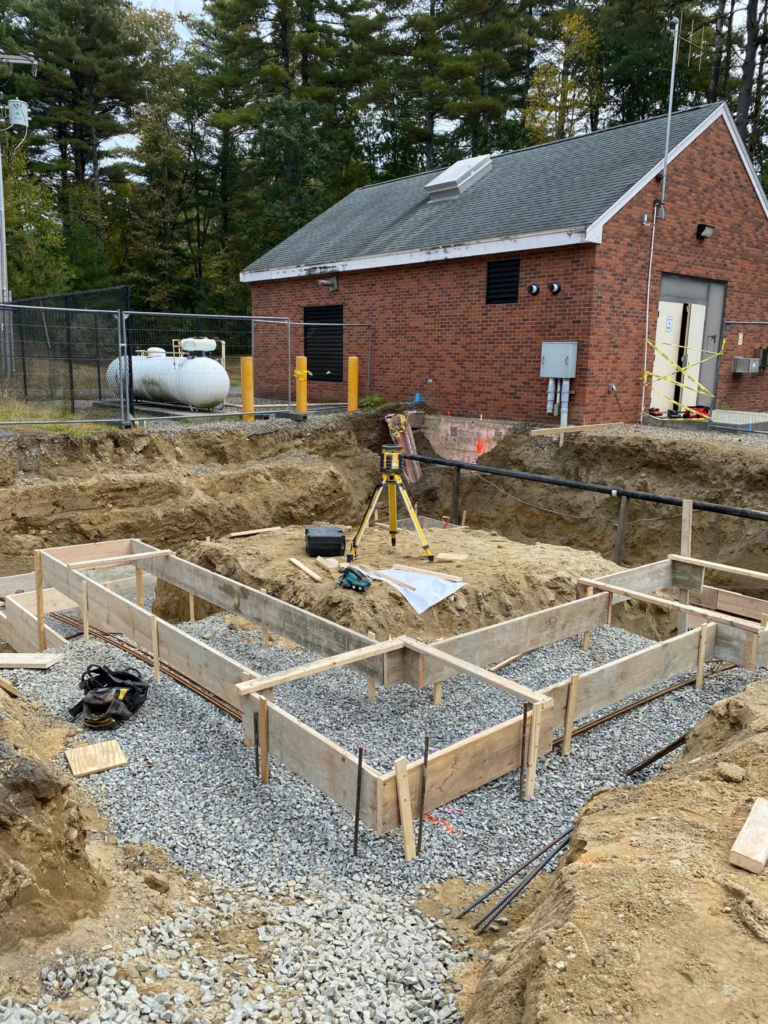A public forum held Thursday night at the Hopkinton Senior Center updated residents on PFAS contamination and remediation efforts in town.
Select Board member Shahidul Mannan outlined the goals of the meeting prior to presentations from other town officials.
“By explaining the current state of the situation, hearing from citizens and outlining a proposed framework for an advisory council, we hope to formulate the right strategy for this together,” said Mannan.
Health Director Shaun McAuliffe opened the forum with a review of what PFAS chemicals are and the primary sources of these contaminants.
“Consumer products and food are the largest sources of PFAS exposure,” McAuliffe said. He also noted that contaminant levels in certain packaged foods dwarf the levels seen in Hopkinton’s water systems.
“The greatest load of PFAS [in our bodies] is coming from our food, not our tap water,” he added. “Until we get them out of our foods and products, we’ll continually be dosing our water and septic systems.”
Other sources include repurposed wastewater sludge. Records indicate the Hopkinton Country Club’s grounds may have been fertilized using wastewater, causing contamination.
Officials believe aqueous film-fighting foam used at the former firefighter training facility off Fruit Street is another contamination source. The facility was near the location of Well 6, which contains the highest PFAS concentrations in town.
“We’re also looking at a source outside of town that may have impacted the YMCA property,” said McAuliffe.
McAuliffe further explained how the town is working with the Massachusetts Department of Environmental Protection (MDEP) to address private wells. He recommended residents hold off on providing the Health Department any testing data for now.
McAuliffe’s concerns over reporting testing data for private wells involve changing PFAS regulations. MDEP has yet to adopt a new federal standard, which drops acceptable levels from 20 to 4 parts per trillion.
Once the lower threshold is adopted, more private wells may qualify as contaminated. If the Health Department cannot link a private well’s contamination to a known source, residents will be responsible for remediation costs.
After McAuliffe’s presentation, Director of Public Works Kerry Reed discussed the current state of the town’s water systems. She reviewed all current sources of drinking water and their quality.
Reed took time to go over the latest PFAS sampling results as well. “Our numbers have consistently been in the 20-30 range, which is above the threshold,” Reed explained.
The Department of Public Works continues to test water supplies regularly and post results online.
To deal with contamination, Public Works has implemented several strategies. Water from Well 6 is “blended” with that of Wells 1 and 2 to dilute the PFAS concentration. Additionally, the town is receiving water supplied by the Ashland water treatment plant.
Reed also provided updates on the most intensive remediation strategy her department is undertaking: the construction of a PFAS filtration system at Well 6. Construction on the system began in October 2023.
“Initial results from testing the system show no signs of detection,” Reed reported, “but we have to run it a bit more.”
Reed was not able to provide a timeline of when the filtration system would be operational.
After speaking, the presenters took questions from residents.
In response to a question, McAuliffe provided information on the longevity of PFAS chemicals in the human body. He explained that while some are removed quickly, others can bioaccumulate. This leads to a constant presence of PFAS between 2-6 parts per billion in most people.
He went on to explain there were no immediate solutions to flushing these “forever chemicals” out of the body. However, levels have dropped in tested populations over the last several years.
“We’re being exposed to lower and lower concentrations every year, and that’s allowing our bodies to clear [the chemicals] out,” said McAuliffe.
Mannan fielded questions about long-term approaches to solving the water quality issues due to PFAS contamination. He discussed the proposed connection to the Massachusetts Water Resource Authority (MWRA) pipeline and the installation of PFAS filters at all town wells.
“We’d get the benefit of joining 47 other towns, a pool of resources, and support from the state by joining MWRA,” said Mannan.
He noted that the town would have to deal with changing environmental standards alone if it sticks with the existing well system.
“We might lose out on some benefits from having our own wells, though,” he added.
Residents inquired about potential contamination in the MWRA system, which draws its water from the Quabbin Reservoir. Reed explained that the Quabbin is a public water system and should have testing data available online.
“They’re also running that water through a treatment plant before it goes out to customers,” she said.
One resident inquired about the state’s financial responsibility in mitigating the town’s PFAS levels. They referenced equipment and training the state provided for fire suppression at the LNG plant. Residents asked for the situation to be investigated.
“That would be one goal of an advisory body, should we form one,” said Mannan. He also explained that the town of Millis had received compensation for a similar situation regarding fire foam training.
“Trying to hold potential responsible parties accountable is not simple,” Reed cautioned.
McAuliffe compared the possible legal process of recuperating PFAS remediation costs to lawsuits the state has filed against pharmaceutical companies responsible for the opioid crisis.
“This isn’t our problem,” McAuliffe said. “It was created at a much larger scale, and we’re the ones paying for it.”
















0 Comments